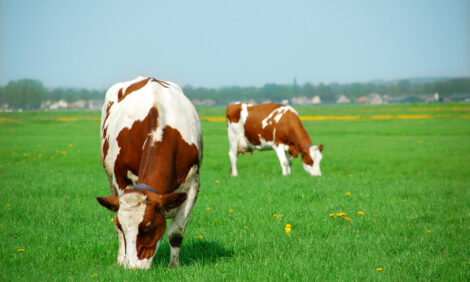



Pastures Weakened by Drought Will Require Time to Recover
US - Nebraska's pastures are starting to grow again, but the effects of last year's drought linger and might cause complications for producers, a University of Nebraska-Lincoln forage specialist has said.Some might want to get their animals outside and into green fields, but drought-weakened pastures will not be able to feed these animals without sustaining further damage, said Bruce Anderson, UNL Extension forage specialist. However, there are ways to compensate for the loss and help pastures recover.
Although recent snow and rain provided moisture for pastures, the levels were still less than average. Considering the severe stress pastures experienced during last year's drought some might be dead or exhibit slow growth, the Institute of Agriculture and Natural Resources specialist said. Damaged pastures could take another year to recover.
Pastures throughout the state, especially those with bluegrass, have gaps that allow for weeds to establish. Noxious weeds like thistle and leafy spurge, as well as woody plants like brush and red cedar trees can take advantage of the weakened pastures.
"Weeds are a natural outcome when competitive ability of the plants is lowered," said Mr Anderson. "Weeds become more opportunistic with less competition, so it's important to get them under control while patches are still small."
In general, drought and overgrazing damaged almost all pastures last year. The plants don't begin to recover until after they have started to grow, and extra stress can slow down that process.
"Pastures might be green and growing, but their ability to handle further stress has lessened," Anderson said.
Mr Anderson suggests waiting 10 to 14 days later to let animals out for grazing. Feeding on leftover hay or other forages from winter for this extra time will give permanent pastures much needed recovery time.
"Any permanent pasture that was really stressed last year is going to have some really weak plants in it," Mr Anderson said. "And we've got to be careful that we don't overstress those plants early in the spring."
Planting annual forages also can help relieve some of the pressure on stressed pastures and forage supplies. The drought severely depleted hay supplies last year, so planting oats, grasses and millets can compensate for some of that problem.
"These annuals can be very productive in terms of the amount of forage they produce to rebuild that hay supply," Mr Anderson said.
With the recent rain, Anderson thinks some pastures might hold an opportunity for fertilizer. Application will not be appropriate in all fields, but might stimulate growth in others. In pastures that have enough moisture in normal years, fertilizer will help take advantage of existing rain moisture to help pastures recover.
Producers should still be careful with grazing even if they take these precautions. Anderson warns not to overstock in stressed pastures.
"We have to keep the stocking rate conservative to give plants a chance for a lengthy, long-term recovery," he said. "They cannot be continually grazed short."



